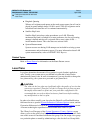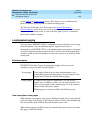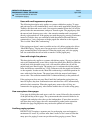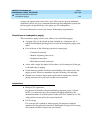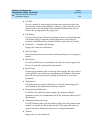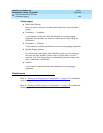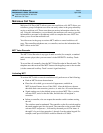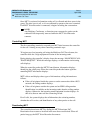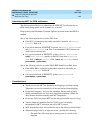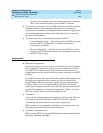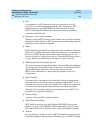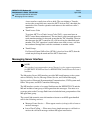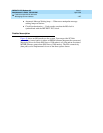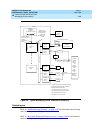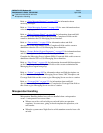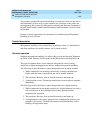
DEFINITY ECS Release 8.2
Administrator’s Guide
555-233-506
Issue 1
April 2000
Features and technical reference
1423Malicious Call Trace
20
Administering MCT for ISDN notification
The following describes how to administer the ISDN MCT notification for an
ISDN trunk group (public-ntwrk, tandem, tie, or access).
Display the System-Parameter Customer-Options form and ensure that ISDN is
enabled.
One of the following must be set on the DS1 form:
■ If the DS1 is connected to the public network in Australia, set Country
Protocol
field to 2.
■ For a private network of DEFINITY systems, set Country Protocol to 1
and
Protocol Version to a. This is recommended if DCS features are
used in the private network.
■ For a private network of DEFINITY systems, set Peer Protocol to
q-sig. (Peer Protocol appears on the DS1 form when Signaling
Mode
field is isdn-pri, Connect field is pbx, and Interface field is
peer-master or peer-slave.)
One of the following must be set on the ISDN-BRI Trunk Circuit Pack form:
■ If the ISDN-BRI is connected to the public network in Australia, set
Country Protocol field to 2.
■ For a private network of DEFINITY systems, set Interface to
peer-master or peer-slave.
Considerations
■ Trunks involved in MCT are blocked from dropping to facilitate tracing.
Telephones involved in a malicious call are not blocked from dropping.
■ Except for Emergency Access to the Attendant, features that normally
display information do not do so on a controlling telephone. Otherwise,
these features function normally until MCT deactivates.
■ Do not use FACs to activate MCT because the process takes users too long.
■ Visually Impaired Attendant Service (VIAS) voices-out display
information for MCT activation, but not for MCT control.
■ MCT information on an active malicious call is lost during a switch failure.
■ When directing a trace to an adjacent switch, consider the following:
— The malicious caller may hear a warning tone as a result of the
intrusion.



